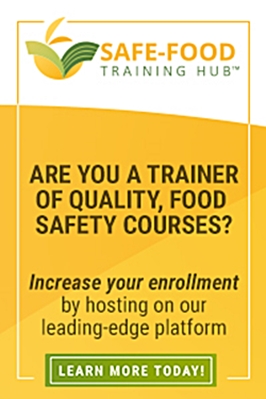Food Safety is a Matter of Trust
According to the National Restaurant Association, a typical day in the United States will find over 130 million people eating at least one meal outside the home. In addition to the 945,000 restaurants that are available, consumers will purchase meals at a variety of secondary dining establishments including grocery stores, convenience stores, hospitals, schools, lodging facilities, and attraction concessions.
In a society where consumers are demanding more and more information about the products they purchase, it is extraordinary that these same consumers most often do not bother to ask themselves two important questions; who exactly is preparing this food I am about to purchase, and are they using safe food handling procedures?
With the amount of publicity that cases of illness and death related to poor food handling procedures garner in today’s news, it seems incongruous that food safety is accepted by most Americans as a given. There are few instances in our lives where we trust total strangers.
However, we seem to have little problem placing our trust in those, often invisible, individuals preparing and handling our food whose non-adherence to proper procedures could cause us to become ill. Whether this complacency is derived from a core belief that the government and existing regulations guarantee safe food, or simply the indifference of an individual who has yet to experience the consequences of food-borne illness, the food consumer is a trusting sort. It is important that food service administrators understand that out of that trust comes a paramount responsibility.
There are two maxims that must be at the cornerstone of every food service operation’s training program:
- Training must be repetitive and continuous
- What gets measured, gets done
Eileen Staples is the Director of Food and Nutrition Services for Greenville County Schools in Greenville, SC.
The department consists of 90 on-site locaitons and 10 satellite programs serving 70,000 meals per day.
The department won NSF’s Leadership Award in 2008 for its food safety program and is the first school district in the nation to have achieved this award.

Categories: Risk Management
Tags:




